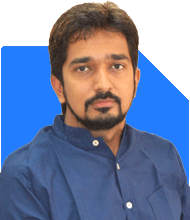Sir, my salary saving is Rs 5000 per month. My age is 34 years. Where should I invest to get an amount of 50 lakh at age of 60 years.
Ans: You aim to accumulate Rs 50 lakh by the time you turn 60. With a current age of 34, you have a 26-year investment horizon. Saving Rs 5000 per month is a commendable start towards achieving this goal.
A long investment horizon allows you to take advantage of compounding returns, and a disciplined savings approach sets a solid foundation for your financial future.
The Role of Equity Investments
Equity investments are critical for long-term wealth creation. They typically offer higher returns compared to fixed-income securities, especially over long periods. The volatility in equity markets can be a concern, but with a 26-year horizon, you can ride out market fluctuations and benefit from overall market growth.
Equity mutual funds are a suitable vehicle for your needs. They pool money from various investors to invest in a diversified portfolio of stocks, managed by professional fund managers.
Diversifying Your Portfolio
Diversification is key to managing risk in your investment portfolio. By spreading your investments across various asset classes and sectors, you can reduce the impact of poor performance in any single area.
Large-Cap Funds: These funds invest in well-established companies with a large market capitalization. They offer stability and steady returns, making them a reliable foundation for your portfolio.
Mid-Cap and Small-Cap Funds: These funds focus on companies with medium to small market capitalization. While they come with higher risk, they also offer higher growth potential. Including these funds can boost your portfolio's overall returns.
Multi-Cap and Flexi-Cap Funds: These funds invest across various market capitalizations, providing flexibility to the fund manager to capitalize on market opportunities. This approach allows the portfolio to adapt to changing market conditions, potentially offering better risk-adjusted returns.
Benefits of Actively Managed Funds
Actively managed funds are managed by professional fund managers who actively select and manage the portfolio with the goal of outperforming the market index. These managers use research, market analysis, and their expertise to make investment decisions.
Advantages Over Index Funds: Index funds passively track a market index and aim to match its performance. They lack the flexibility to adapt to changing market conditions or capitalize on specific investment opportunities. Actively managed funds, on the other hand, can potentially deliver higher returns due to the fund manager's expertise and strategic decisions.
Importance of Professional Management: Professional management in actively managed funds helps in navigating market volatility and making informed investment choices. This guidance can be crucial for maximizing your returns over the long term.
Systematic Investment Plan (SIP)
Investing through a SIP is an excellent strategy for consistent investing. It allows you to invest a fixed amount regularly, regardless of market conditions. SIPs help in averaging the purchase cost, known as rupee cost averaging, and reduce the impact of market volatility over time.
Consistency and Discipline: SIPs instill a habit of regular investing, which is essential for long-term wealth creation. By investing Rs 5000 per month, you ensure a disciplined approach to building your corpus.
The Power of Compounding
Compounding is the process where the returns on your investments generate additional returns. Over time, this leads to exponential growth of your investment corpus. Starting early and investing consistently maximizes the benefits of compounding, significantly increasing your chances of reaching your financial goal.
Long-Term Impact: With a 26-year investment horizon, the power of compounding can turn your regular savings into a substantial corpus. The longer your money remains invested, the greater the compounding effect, making time your greatest ally in wealth creation.
Regular Reviews and Adjustments
Regularly reviewing your portfolio ensures it remains aligned with your financial goals and risk tolerance. Market conditions and personal financial situations change, necessitating adjustments in your investment strategy.
Rebalancing: Periodically rebalancing your portfolio involves realigning the weightings of your assets to maintain your desired risk level. This might mean selling high-performing assets and buying underperforming ones to keep your portfolio balanced.
Consulting a CFP: A Certified Financial Planner (CFP) can provide valuable insights and professional advice. They can help you navigate market changes, adjust your strategy as needed, and ensure you stay on track to achieve your financial goals.
Benefits of Investing Through a CFP
Investing through a Mutual Fund Distributor (MFD) with a CFP credential offers several benefits. CFPs provide personalized financial planning and advice, helping you select the most suitable funds and investment strategies.
Professional Guidance: A CFP's expertise ensures that your investment choices are well-informed and aligned with your long-term objectives. This guidance can be crucial for optimizing your investment returns and managing risks effectively.
Regular Monitoring: A CFP can help you with regular portfolio reviews and rebalancing, ensuring your investments continue to meet your financial goals despite changing market conditions.
The Importance of Patience and Discipline
Long-term investing requires patience and discipline. Avoid reacting to short-term market fluctuations, which can lead to impulsive decisions and potential losses. Staying committed to your investment plan and maintaining a long-term perspective are key to achieving your financial objectives.
Avoiding Market Noise: Market volatility is inevitable, but maintaining a disciplined approach helps you stay focused on your long-term goals. Regular investing through SIPs and periodic portfolio reviews with a CFP can keep you on the right track.
Long-Term Commitment: Understanding that wealth creation takes time and persistence is crucial. By remaining patient and disciplined, you increase your chances of achieving your financial goal of Rs 50 lakh by age 60.
Conclusion
Your goal of accumulating Rs 50 lakh by the time you turn 60 is achievable with a disciplined investment approach. Equity mutual funds, diversified across large-cap, mid-cap, small-cap, and multi-cap categories, can provide the growth needed to reach this target.
Starting a SIP of Rs 5000 per month in these funds and leveraging the power of compounding will significantly enhance your wealth creation journey. Regular portfolio reviews and adjustments, guided by a Certified Financial Planner, will ensure your investments stay aligned with your goals.
By staying committed, patient, and disciplined, you can successfully build a substantial corpus for your future.
Best Regards,
K. Ramalingam, MBA, CFP,
Chief Financial Planner,
www.holisticinvestment.in


























